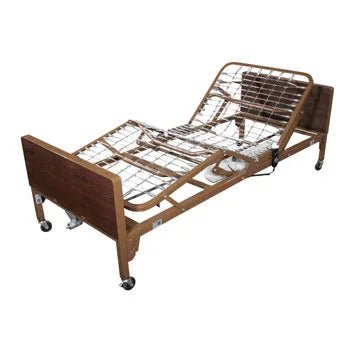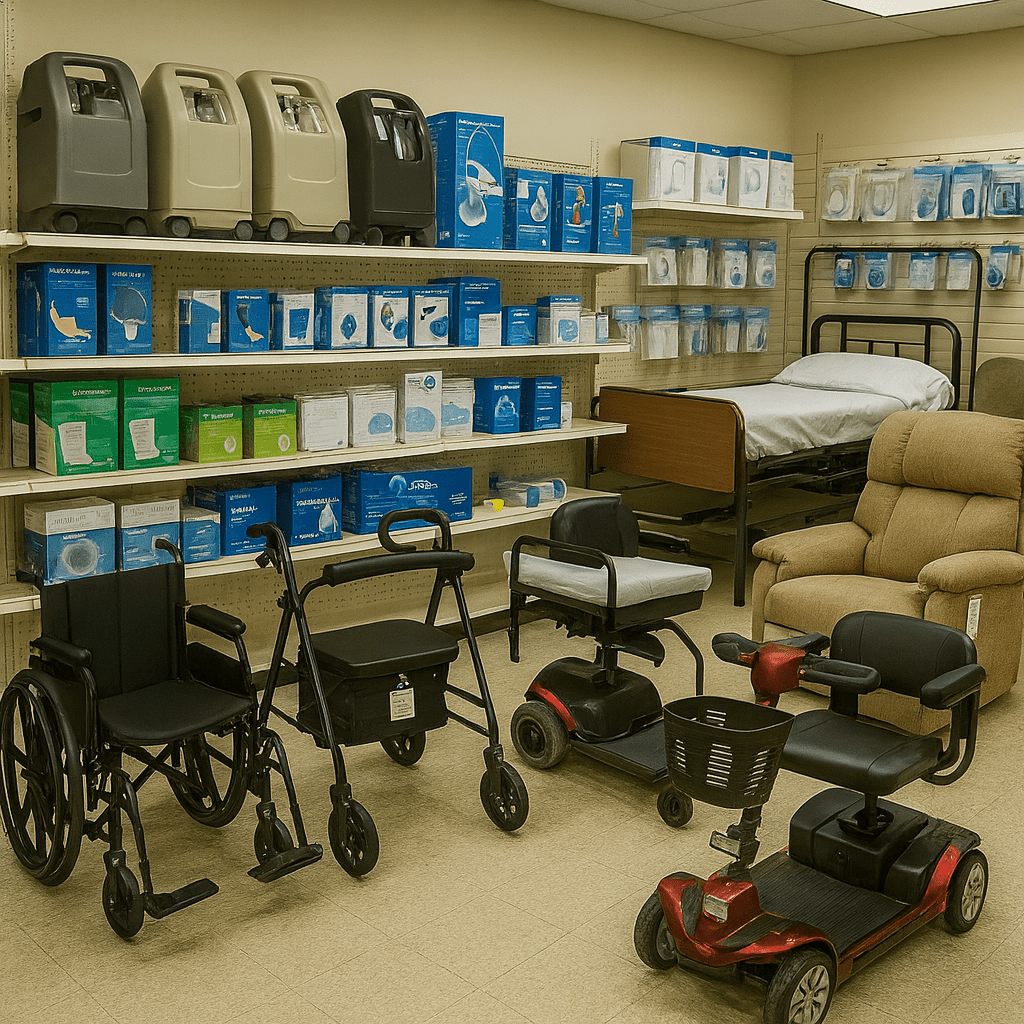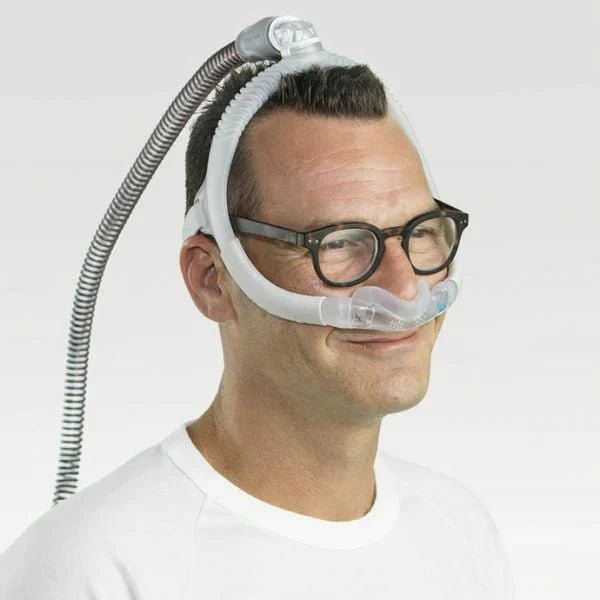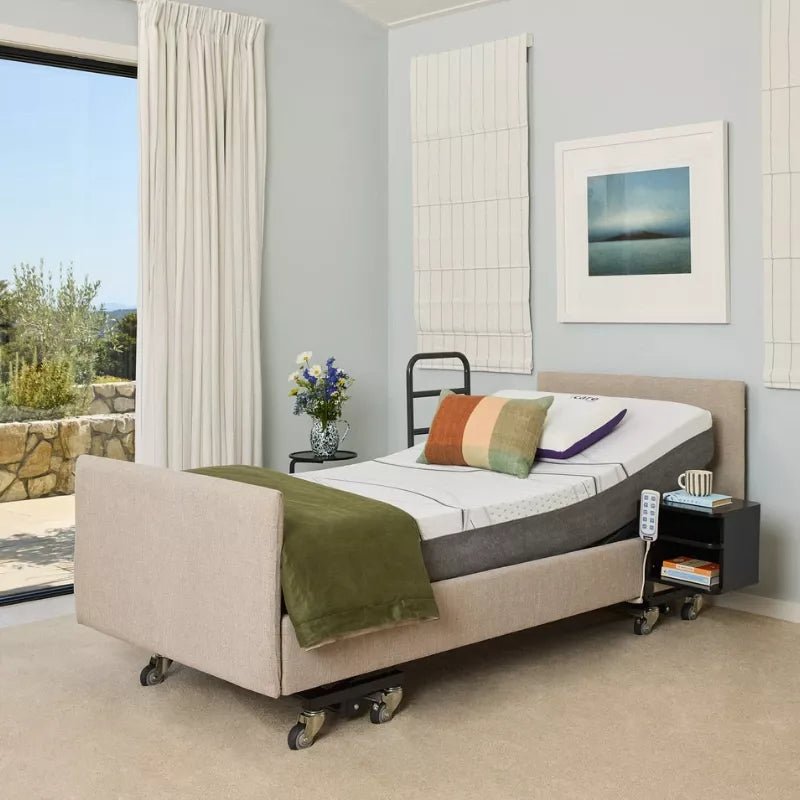Understanding Home Hospital Beds
Types of Home Hospital Beds
When selecting a home hospital bed, understanding the different types is crucial. The primary categories include semi-electric beds and fully electric beds. Each type offers unique benefits tailored to specific patient needs.Semi-Electric Beds
Semi-electric beds are a blend of manual and electric functionality. They offer: Manual Height Adjustment: This feature allows caregivers to adjust the bed's height manually, which may be beneficial for those who need to control the bed's height more precisely. Electric Head and Foot Positioning: Patients can adjust the head and foot sections of the bed with the push of a button. This provides ease of use, particularly for those with limited mobility, offering comfort without requiring caregiver assistance. These beds are typically more affordable than fully electric beds, making them an attractive option for budget-conscious families while still providing essential adjustability.Fully Electric Beds
Fully electric beds provide comprehensive adjustability with minimal physical effort required from either patients or caregivers. Key features include: Electric Controls for Height, Head, and Foot Positions: All aspects of the bed’s configuration can be adjusted electrically. This feature significantly reduces physical strain on caregivers and enhances patient independence. Enhanced Comfort and Convenience: These beds allow patients to make adjustments as needed throughout the day, improving overall comfort and potentially aiding in faster recovery. Fully electric beds are ideal for individuals who require frequent position changes or who value independence in managing their own comfort.Comparison: Semi-Electric vs. Fully Electric Beds
Understanding how these two types of home hospital beds compare regarding patient independence and caregiver ease can aid in decision-making: Patient Independence: Fully electric beds offer greater autonomy as patients can adjust their position without help. For those seeking to empower patients with self-care capabilities, this is a significant advantage. Caregiver Ease: While semi-electric beds require manual height adjustments, fully electric models eliminate this need, reducing caregiver workload. This is particularly beneficial in settings where caregivers may be managing multiple tasks or individuals. Selecting between semi-electric and fully electric beds depends on balancing budget considerations with the need for patient autonomy and caregiver convenience. Each type serves distinct needs but aims to enhance safety and comfort within home care settings.Key Features to Consider in Home Hospital Beds
When selecting a home hospital bed, focusing on key features significantly impacts patient safety and comfort.Safety Railings
Safety Railings are crucial for fall prevention. These railings provide essential support, reducing the risk of accidents for patients who may have limited mobility or are prone to rolling out of bed.Specialized Mattresses
Specialized Mattresses play a vital role in recovery and preventing pressure sores. These mattresses are designed to distribute weight evenly, providing necessary support and enhancing overall comfort for long-term bedridden patients.Additional Accessories
Additional accessories like over-bed tables and trapeze bars further enhance comfort and functionality. Over-bed tables offer convenient surfaces for meals or activities, while trapeze bars assist with repositioning and mobility, ensuring that daily activities can be performed with relative ease. The consideration of these features—ranging from safety aspects like railings to comfort-enhancing elements such as specialized mattresses—ensures that you choose a bed that meets both medical needs and personal preferences.Selecting the Right Home Hospital Bed for Your Needs
Choosing the right home hospital bed, such as the CS Series CS7 Bed, is crucial in ensuring that it meets specific patient needs, whether it's for short-term recovery or long-term use. Several factors such as duration of use, individual requirements, and budget considerations play a vital role in this decision-making process. Understanding these elements will guide you toward selecting a bed that offers both safety and comfort.Safety Considerations When Choosing a Home Hospital Bed
Safety is paramount when it comes to selecting a home hospital bed. The design and features of the bed can significantly impact patient well-being and caregiver ease.Benefits of Low Bed Designs for Minimizing Fall Risks
Low bed designs are particularly beneficial in reducing the risk of falls, which is a common concern for patients receiving care at home. These beds, like the aforementioned CS Series CS7 model, are engineered to be closer to the ground: Fall Prevention: By minimizing the height, low bed designs decrease the distance a patient might fall, thereby reducing potential injury severity. Ease of Transfer: Patients with mobility challenges can find it easier to get in and out of lower beds, which enhances their independence and confidence. Caregiver Assistance: Caregivers can more safely assist patients without straining themselves, improving their overall caregiving experience.Importance of Assessing Room Layout for Safety Measures
The layout of the room where the home hospital bed will be placed is another critical safety consideration. A thoughtful room setup not only enhances safety but also contributes to effective care delivery: Space Optimization: Ensure that there is enough space around the bed for caregivers to move freely and efficiently assist the patient. Accessibility: Position the bed in a way that allows easy access to essential medical equipment and facilities such as power outlets for electric beds. Lighting and Visibility: Adequate lighting is necessary to prevent accidents during nighttime or low-light conditions. Consider installing night lights or motion-sensor lights to improve safety. Obstacle-Free Environment: Remove rugs, loose cables, and other potential trip hazards from around the bed area. Making informed decisions regarding these aspects will greatly influence the patient's comfort and safety while also facilitating smoother caregiving operations. Addressing these safety considerations helps create an environment conducive to healing and recovery.Comfort Enhancements in Home Hospital Beds
Adjustable height settings in home hospital beds are crucial for improving both patient comfort and caregiver convenience. These settings make it easy to raise or lower the bed, catering to specific patient needs based on medical conditions. For instance, adjusting the height can simplify transfers from the bed to a wheelchair, significantly reducing physical strain for caregivers. Sleep quality and overall well-being are directly influenced by these adjustable features. By customizing the bed's position, patients can achieve optimal sleeping postures, which is essential for those with chronic pain or respiratory issues. This adjustability not only benefits short-term recovery but also supports long-term comfort, making it a worthwhile investment regardless of the planned duration of use. In addition to comfort, low bed designs play a vital role in fall prevention measures. These designs enable safer ingress and egress from the bed, minimizing risks associated with falls. Such features should be evaluated alongside budget considerations, as well as insurance coverage options like Medicare or Medicaid, ensuring that financial constraints do not hinder access to these essential comfort enhancements. For those seeking comprehensive support and ease of use, exploring models highlighted in the Top Home Hospital Beds: Ultimate Guide for Safety & Comfort can provide valuable insights into suitable choices tailored to individual requirements.Top Recommended Models of Home Hospital Beds
Exploring the top models of home hospital beds can provide invaluable insights into the features and benefits that cater to diverse patient needs. Here are three standout options:Hill-Rom 1105 Advance Bed
The Hill-Rom 1105 Advance Bed offers hospital-grade support, making it an excellent choice for patients requiring intensive care at home. Key features include: Adjustable Height and Positioning: Facilitates easy transfers and optimal positioning for both patients and caregivers. Safety Features: Integrated side rails and a robust frame enhance safety, reducing the risk of falls. Durability: Known for its sturdy construction, this bed is built to withstand prolonged use. The Hill-Rom 1105 is ideal for those who prioritize safety and stability in a home care setting.Hill-Rom P1600 Advanta Bed
For those seeking advanced functionality, the Hill-Rom P1600 Advanta Bed stands out with its fully electric controls. Highlights include: Comprehensive Adjustability: Offers independent control over head, foot, and height settings, maximizing comfort while minimizing caregiver strain. User-Friendly Interface: Intuitive controls make it accessible for both patients and caregivers. Enhanced Mobility Features: Designed to facilitate movement within the bed, promoting patient independence. This model is particularly beneficial for individuals who value ease of operation and advanced adjustability.Stryker S3 Bed
The Stryker S3 Bed excels in providing ease of access in constrained environments. Features worth noting are: Compact Design: Ideal for smaller spaces without compromising on function or comfort.








